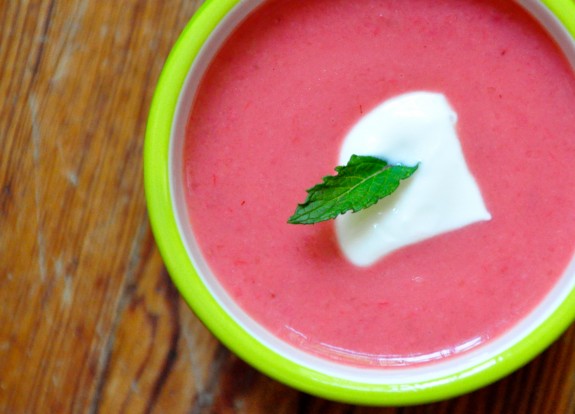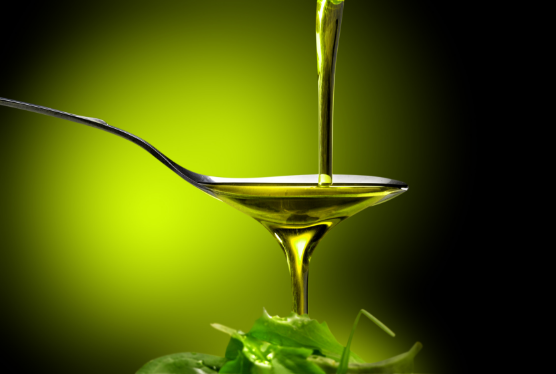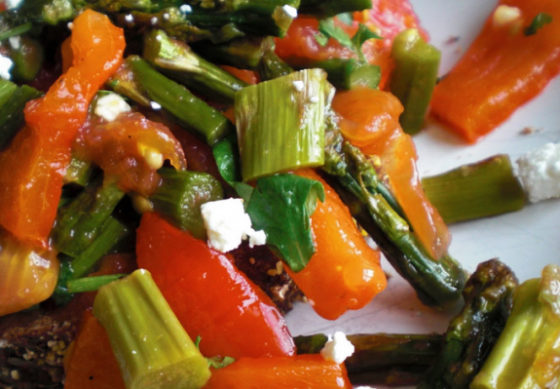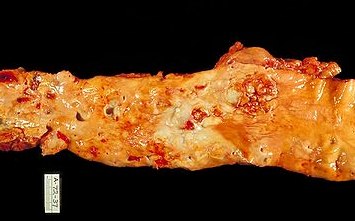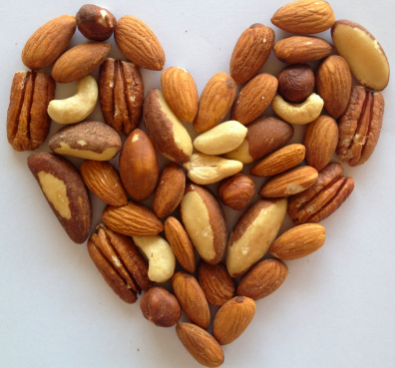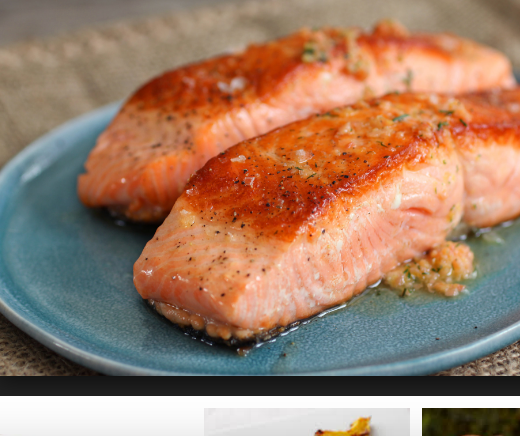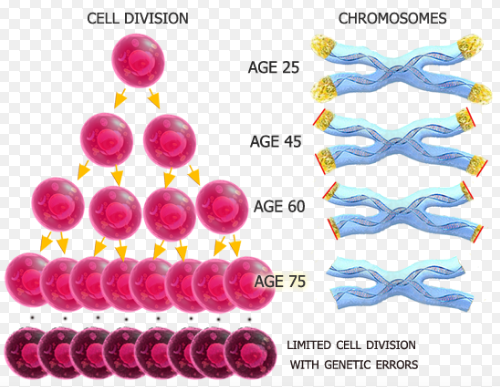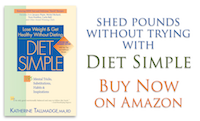Springtime Strawberry and Goat Cheese Salad
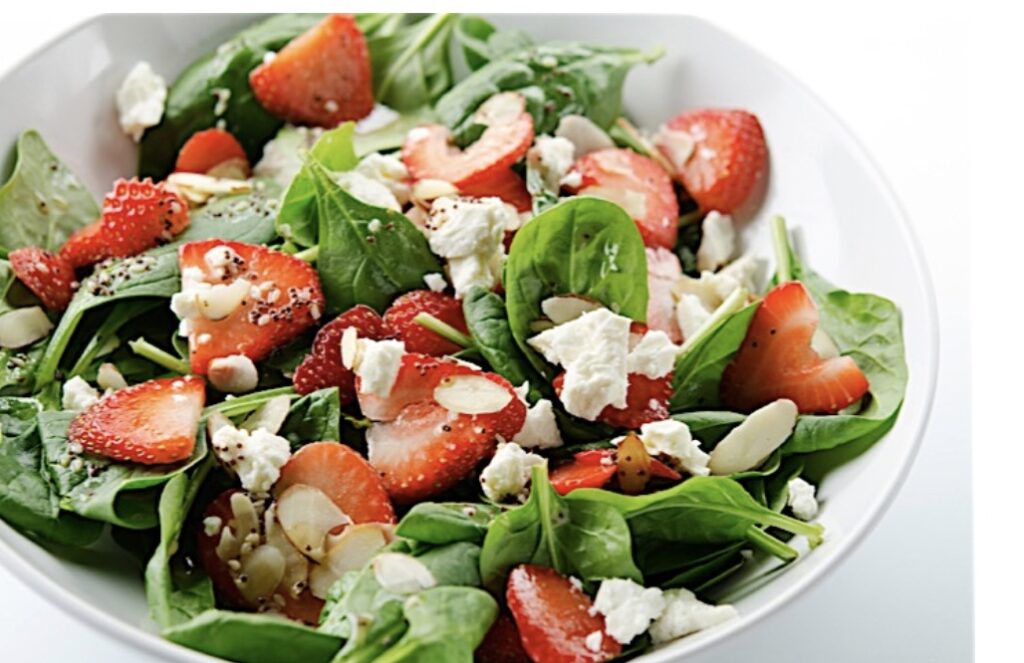
Four Tips for Choosing the RIGHT Olive Oil
My clients regularly ask me how important using olive oil is. Of course, we have all heard about olive oil’s health benefits. But there is still understandable confusion. I’m regularly asked, “How does olive oil compare to other oils? How does it work? What kind of olive oil is best? How much should I use?” My answer: It depends…
These are important questions as more and more science is finding that the nutrients in olive oil, called “polyphenols,” are responsible for its superior health benefits. Increased longevity, reductions in cardiovascular disease, metabolic syndrome, obesity, diabetes, and various cancers, are among the benefits, confirmed a 2015 review of studies published in the British Journal of Nutrition. But olive oils can vary significantly in their polyphenol content. There are four times more phenolic compounds in high quality extra virgin olive oil versus low quality or refined olive oil – 232 mg vs 62 mg per kilogram of oil – so it is important you choose the right olive oil.
“99 percent of olive oil’s health benefits are related to the presence of the phenolic compounds, not the oil itself,” said Nasir Malik, NIH Scientist. “And without the polyphenols, you might as well use the less expensive canola oil.”
Surprisingly, when tested by the U.S. Department of Agriculture, polyphenols were low in most commercially available olive oils. They also didn’t live up to international quality standards defining extra virgin olive oil. These standards require an acidic pH, necessary to protect the nutrients. And the olive oils’ pH had degraded – even in the highest end gourmet shops – according to studies conducted at the University of California at Davis Olive Center.
That’s because olive oil’s polyphenol content diminishes, and its acidic pH degrades over time, as days, weeks, and months go by after harvest. Other factors play a role, too: the harvesting methods, the age of the trees, the ripeness of the olives, the processing, and the storage. Since time, heat, and light affect polyphenol content, choose olive oil that:
- Is no more than one year old (look for the harvest date on the label),
- Is in an air-tight, dark glass, or tin container,
- Is stored in a cool environment, and
- Smells and tastes like olives, which could be fruity, grassy, or peppery.
Is olive oil better for your health than other oils? The answer is yes, according to a new study in Nutrition & Diabetes. For one, “The risk of type 2 diabetes reduced by 13% with increasing intake of olive oil up to 15 to 20 grams per day (3 to 4 teaspoons),” according to the study. When refined olive oil, or other oils, were compared, fresh extra virgin olive oil was more beneficial for the prevention and management of diabetes. It was associated with lower fasting blood glucose, and Hemoglobin A1C, a three-month average of blood glucose and an important marker for diabetic complications.
Other studies have found high polyphenol olive oil improves health in many ways:
- Increasing levels of good cholesterol (which helps clear artery-clogging fat from the bloodstream),
- Improving artery wall health and functioning (important for healthy blood pressure, blood flow, reducing blood clots, and the risk of cardiovascular disease), and
- Reducing oxidation and inflammation processes involved in many diseases from infections to cancer.
To take full advantage of your olive oil’s flavor and health benefits, save your recently harvested, high quality extra virgin olive oil for drizzling on vegetables, salads, or anything! When cooking with high heat, i.e., stir frying, use canola oil or nut oils instead, as they can be less expensive, and have higher smoking points so can tolerate higher temperatures without burning.
My favorite vinaigrette: Mix 1 or 2 tablespoons of olive oil with 1 or 2 tablespoons of freshly squeezed lemon juice, salt and pepper. The proportion of olive oil to lemon juice depends on how tart you like your vinaigrette. You can also add a smidge of mustard or herbs. Serve!
One shop in Georgetown which consistently sells high quality olive oils is Georgetown Olive Oil company. It is locally owned and operated at 1524 Wisconsin Avenue. The shop displays rare-to-find information, such as the oils’ date of harvest, provenance, and detailed descriptions. And you can taste any of the oils at any time. I highly recommend this cozy and friendly specialty shop where they clearly understand what makes a great olive oil!
For more detailed information on olive oil, read my Washington Post article: “Most Olive Oil is not as Healthful as You Think”
My Favorite Asparagus Recipes
Spring has always seemed more like the new year to me than January first. Perhaps my inspiration comes from longer, warmer, sunlit days, delicate vegetables and fruits, like asparagus and strawberries, finally popping up, flowers blooming everywhere. Neighbors begin venturing out of winter hibernation with their first happy greetings of the year, with sounds of their children playing in the street. Celebrations are occurring all over the city showing off our beauty and splendor to the tourists. In fact, I think I’ll make my New Year’s Resolution today! And it’ll be easy – preparing batches of veggie salads – or soups, at least weekly, to help me and my friends shed some of our winter “padding.” Making delicious veggies your main course at dinners (lunches, too) helps manage your weight easily. Asparagus is one of my major harbingers of spring. Here I’d like to share some of my favorite asparagus recipes excerpted from my book, Diet Simple Farm to Table Recipes: 50 New Reasons to Cook In Season!, where you’ll find dozens of other seasonal recipes:
Chilled Asparagus in a Creamy Tarragon, Shallot and Roasted Walnut Vinaigrette
Salad of New Potatoes and Asparagus with Lemony Garlic Herb Mayonnaise
Pasta with Pesto, Roasted Asparagus and Cherry Tomatoes
Asparagus Salad in a Vietnamese-Style Dressing
Is Butter Good For You?
- At April 10, 2017
- By Katherine
- In Articles, News
 0
0
Butter is Back! And it’s even good for you? These declarations can be illustrated by the dizzying array of delicious butters now available: besides the old-fashioned American butters, you can easily find the extra rich Irish and French Butters, and a variety of premium, grass-fed, and organic farmers market butters extolled for their superiority, and with a premium price tag to match. Is this a food lover’s dream come true? Even some nutritionists have joined the bandwagon, and yours truly has been confused.
This seemingly good news may have started with the widely read earth shattering 2002 New York Times Magazine story, “What if it’s All Been a Big Fat Lie?” by Gary Taubes, featuring a big, fat, juicy piece of steak on the cover. More recently, Mark Bitman wrote a 2014 New York Times story covering a scientific study in the March 2014 Annals of Internal Medicine journal concluding that eating saturated fat, the so-called artery-clogging, demonic fat in butter, did not raise a person’s risk of heart disease. This exciting news, covered in just about every print and broadcast media outlet around the world, seemed to reverse decades of medical advice saying the opposite was true.
So, how do we hash out the truth?
This is an important question as one in every four deaths of Americans are from heart disease, so it’s a critical issue concerning the health of the majority of Americans – and my clients, who rely on me to get it right. After all, what’s more important than your health?
Upon exhaustive research, I’ve found the answer, interestingly, is not too different than conclusions made by Harvard scientist, Ancel Keys, and other respected scientists in the 1950s, 60s, and 70s: that the type of fat – not total fat – is responsible for the rise in heart disease because of its affect on blood cholesterol levels.
But how important is blood cholesterol level? A multitude of factors increase heart disease risk, such as calcification, inflammation, blood pressure, high triglycerides, diabetes, obesity, inactivity, smoking, family history, gender, and age. But, apparently, the correlation between high LDL(bad) cholesterol levels and heart disease has been well established and is still deemed significant to your risk of heart disease and your health. Conclusion: Keep LDL low (under 100) and HDL high (Over 40) to prevent heart disease risk.
And the most recent clinical study – the gold standard of scientific studies – has confirmed the worst (if you’re a butter lover, that is): Replacing the saturated fat in butter with unsaturated oils, not only raises HDL (good) cholesterol – which clears fat and reduces placque in the arteries – using oils instead of butter also reduces artery-clogging LDL (bad) cholesterol from the bloodstream. Conclusion: Use oil instead of butter to reduce heart disease risk. So, it seems the advice hasn’t changed since Ancel Keys discovered the superior health of Mediterraneans who used oil instead of butter.
In a recent Harvard School of Public Health’s analysis of the controversy, the scientists review decades of research showing the successful reduction in heart disease risk by doing things like replacing butter (high in saturated fat) with oil, replacing steak with salmon, and eating a plant-based diet based on fruits, vegetables and whole grains for the reduction of LDL cholesterol, the increase in HDL cholesterol, the resulting effect on lowering heart disease risk, and improving your overall health. Conclusion: “Butter is not back!” said Harvard’s Walter Willett.
So, what about those New York Times articles? Well… Caveat Emptor! Don’t believe everything you read, and consider the source (be sure the information comes from a peer-reviewed, scientific journal, and compare it to other established science).
To say this Swede, raised on cream and butter, is disappointed, is an understatement! But I still use luxurious butter sparingly, when I deem necessary!
And it’s a relief to know that all these years, helping my hundreds of clients lower their LDL and raise their HDL cholesterol levels by substituting butter with healthy oils and other lifestyle changes has not been a waste! WHEW! No rioting necessary 🙂
The Top 5 Food Do’s & Don’t’s Affecting Heart Disease Risk
- At March 27, 2017
- By Katherine
- In Articles, News
 0
0
In 2012, 45.4% of all heart disease deaths could be attributed to inadequate intake of certain foods, according to a recently published study in the Journal of the American Medical Association.
We’ve known for decades that what you eat significantly affects heart disease risk factors such as high blood pressure, high cholesterol, hemorrhages, diabetes, and inflammation. These results were based on a variety of different kinds of studies – epidemiologic, prospective, and clinical trials – set out to quantify the effect of specific foods on heart disease deaths.
The Intake of These Top 5 Foods, In Order of Predominance, Affect Your Heart Most Dramatically
1. High Sodium: Sodium, usually eaten in the form of salt, which is half sodium, pulls fluid into your blood vessels. This extra fluid increases the force of the blood against artery walls, reducing the flow of blood to your organs, making it harder for your heart to pump the blood efficiently, and damaging your heart. This excess force (or “pressure”) stresses the artery walls, potentially causing tears, blood clots, aneurysms and strokes. The recommendation is to take in less than 2,300 mg daily. Most Americans eat at least double that.
2. Low Nuts and Seeds: Epidemiological studies have found for decades that nut and seed eaters around the world have fewer heart attacks. The oil in nuts contains nutrients which seem to have a positive impact on heart function and increases good cholesterol, which helps prevent bad cholesterol from clogging the arteries. Also, studies show nuts and seeds help keep body weight down, a major risk factor for heart disease. Eat 2 ounces per day for maximum effect.
3. High Processed Meats: Processed meats such as hot dogs, bacon, sausage, bologna and ham are a major sodium source. They’re also usually high in saturated fats, which increase bad cholesterol. Since they are the highest dietary factor correlated with cancer, this gives you another reason to minimize processed meats. But when on the occasions that you might eat them, to minimize potential damage, pair with foods high in potassium and antioxidants, such as fruits and vegetables. Potassium and antioxidants may help neutralize the effects of sodium and the chemicals used in meat processing.
4. Low Omega-3-Fatty Acid Fish: Omega-3-Fatty Acids help prevent heart disease in many ways. They prevent irregular heart beat, reduce fatty placques inside artery walls, decrease blood clotting, tryglycerides (blood fats), increase good cholesterol and decrease inflammation. The American Heart Association recommends eating about 12 ounces of fatty fish weekly.
5. Low Fruit and Vegetables: Fruits and vegetables have many qualities responsible for the reduction of heart disease risk. They are high in potassium, which helps neutralize the effect of sodium on blood volume by pulling fluid from the arteries, reducing the blood’s pressure on the artery walls. They are high in water content, which studies show helps you feel more full with fewer calories, thus aiding weight loss (high body fat is the primary controllable risk factor for heart disease). Health authorities at the National Institutes of Health, and the U.S. Dietary Guidelines recommend 5 cups of fruits and/or vegetables daily. They should comprise at least half of the volume on your plates.
Blueberry Soup Fuels Bikers at the House of Sweden
- At March 26, 2017
- By Katherine
- In Articles, News
 0
0
On Sunday, March 19, the House of Sweden hosted the Washington Area Bicyclists Association for their 15th annual Vasa Ride. This lively WABA tribute to the renound annual 90 K Swedish Vasaloppet Cross Country Ski Race, uses bicycles instead.
Sunday’s bike ride, though, was a kinder and gentler version of the Swedish ski race, which is a tribute to the founding of a free Sweden. The first Swedish “Vasaloppet” was carried out in 1521 by Gustav Eriksson when he led occupation forces in an uprising against Danish rule from the town, Salen. This resulted in Eriksson, better known as Gustav Vasa, becoming a free Sweden’s first King and Vasaloppet’s namesake. But it wasn’t until 1922 that this endurance race was established and held its first run, also starting in Salen, with 136 skiiers, and took 7 hours, 32 minutes and 49 seconds in sleet and snow for the victor.
This year’s March 4, 2017 Vasaloppet registered 15,800 participants from 43 nations, and is the largest and longest ski race in the world. The winner, Norwegian John Kristian Dahl, won the race after 4 hours and 8 minutes.
Several years ago, the Swedish Embassy and WABA got together to create the annual Vasa Ride, with bikes, since D.C. doesn’t usually have enough snow for a 90 km cross country ski race. The Vasa Ride has four levels of riders who choose to ride for either 59, 31, 16 or 8 miles. On March 29, the House of Sweden, as usual, was a beautiful, light-filled respite from the cold, long ride. The Swedes generously provided the home base and refreshments, including the traditional Vasaloppet “Blueberry Soup,” though the American bikers’ consumption paled in comparison to almost a liter drunk by each skiier in the real Vasaloppet.
“The blueberry soup was warm and filling after the cold 30 mile ride, and it tastes better than I thought it would,” said Robert Bernstein, a WABA member who came from Ellicott City, Maryland.
The Swedish Embassy’s Air Force Attache, Per Danielson, coordinated the Swedish Embassy’s hosting his second year in a row. Danielson was a Swedish exchange student living in Richmond thirty years ago. And with this former exchange student leading, current Swedish exchange student volunteers served blueberry soup at Sunday’s event.
“It’s often the first ride of the year for Washington area cyclists, and is a fundraiser for WABA,” said Nick Russo, WABA’s Events Coordinator. WABA’s mission is “to create a healthy, more livable region by promoting bicycling for fun, fitness, and affordable transportation; advocating for better bicycling conditions and transportation choices for a healthier environment; and educating children, adults, and motorists about safe bicycling,”
Nuts & Seeds Reduce Signs of Aging by Increasing Telomere Length
- At March 11, 2017
- By Katherine
- In Articles, News
 0
0
Nuts and seeds improve signs of biological aging by increasing telomere length. Telomeres, proteins found at the end of each chromosome (think of the plastic protector at the ends of shoe laces), preserve information in our genome and prevent cell death; they serve as a biological clock to determine the lifespan of a cell and an organism. Telomere length shortens with age and can be affected by various lifestyle factors. Shorter telomeres are associated with lower rates of survival and higher rates of disease such as heart disease, cancer, diabetes and osteoporosis.
“Older people with shorter telomeres have three and eight times increased risk to die from heart and infectious diseases, respectively. Rate of telomere shortening is therefore critical to an individual’s health and pace of aging. Smoking, exposure to pollution, a lack of physical activity, obesity, stress, and an unhealthy diet increase oxidative burden and the rate of telomere shortening” according to a National Institutes of Health Review.
A new study found that “nuts and seeds intake was positively and linearly associated with telomere length.” After analyzing DNA and telomere length of study participants, researchers found: “Adults of the same age had more than 1.5 years of reduced cell aging if they consumed 5% of their [calories] from nuts and seeds,” according to the study in The Journal of Nutrition, Health and Aging.
What does that mean for you? If your calories needs are average, and about 2,000 per day, and you would like 5% of your calories to come from nuts and/or seeds, eat about 1/2 ounce or 1/2 a handful per day – or more. I generally recommend an ounce a day for those of us watching our weight and at least 2 ounces a days for those who get to eat unlimited calories (2 ounces daily is associated with a significantly reduced risk for heart disease).
I sprinkle them on my oatmeal each morning! My recipe …
A New Recipe For Improving Seasonal Allergy Symptoms
- At March 06, 2017
- By Katherine
- In Articles, News
 0
0
My clients who suffer from seasonal allergies were hit hard this year – and earlier than usual. The warm February temperatures caused Washington’s flowering trees and shrubs to come out of their winter slumber gloriously. Our famed cherry trees and camellias are almost in full bloom. Even my hydrangeas’ buds are peaking out.
This beautiful display does not feel so beautiful for people with spring allergies. They often have symptoms, caused by the flowers’ pollen, which impact their quality of life: lack of sleep, reduced productivity at work or school, emotional stress and embarrassment…. and the medications designed to improve those symptoms, depending on the person, may be no better, and cause dry mouth, sleeplessness, and drowsiness. A new study set out to test if certain strains of beneficial probiotic bacteria would reduce symptoms and improve quality of life during allergy season for its sufferers.
The study, published in the American Journal of Clinical Nutrition, the first randomized, double blind, placebo-controlled trial – the gold standard of human research – testing this hypothesis, divided 178 allergy sufferers into two groups and tested them during spring allergy season for eight weeks. One group received the probiotic supplement*, the other received the placebo.
The study found the probiotic group experienced improved quality of life symptoms compared to the placebo group. That said, scientists are still working out which of the beneficial probiotic bacteria work best with individual allergens, when to start taking them, and which probiotic bacteria will react most positively with a person’s specific microbiota (the 100 million bacterial organisms in your digestive tract), as each person’s microbiota is different. They mentioned that starting probiotics at a younger age may be more effective, too.
In the meantime, I believe eating foods which naturally contain beneficial probiotic bacteria, such as yogurt, is the best solution for trying to reduce your allergy symptoms. In fact, I recommend eating yogurt every day! Though, I don’t recommend counting on supplements because, as of now, no probiotic supplements have passed the tests allowing them to make a health claim.
Here’s one of my favorite yogurt recipes developed by Georgetown resident, cookbook author, and my friend Najmieh Batmanglij, and found in my book, Diet Simple…
Najmieh Batmanglij’s Yogurt and Spinach Dip
*(Lactobacillus gasseri KS-13, Bifidobacterium bifidum G9-1, and Bifidobacterium longum MM-2 provided by Wakunaga of America Co Ltd)
Are you an “Apple” or a “Pear?” If you have the “Apple Shape,” You May Have a Higher Risk for Dementia
- At February 27, 2017
- By Katherine
- In Articles, News
 0
0
Having a “pear” or “apple” shape can determine the health of a woman’s body – and mind. Of course, Eve knew all about the troubles an apple could bring.
If you gain weight in your chest and belly, you have an apple shape. If your weight gain is in your hips and thighs, you’re a pear. Studies have long shown that if your body fat is concentrated primarily in the middle – like an apple, it is more biologically active and is correlated with health problems like heart disease, high blood pressure, diabetes and cancer.
This study, published in the Journal of the American Geriatrics Society found that as body weight increased in post-menopausal women, cognitive function decreased. But the worst cognitive decline occurred when high body weight was coupled with an apple shape compared to the pear shaped body fat distribution.
This troubling result seems to coincide with studies showing a higher risk of dementia in people with high blood pressure, heart disease or diabetes, the risk of which is heightened by having the apple-shaped body fat distribution.
If you’re overweight, you may still be healthy, as long as you’re physically active and eat healthfully. But if your excess weight is carried mostly around the middle, it would be wise to keep track of your health, especially your blood pressure, blood glucose and cholesterol, and lose weight so that your waist circumference* measures 35″ or less, which is what health authorities recommend for women (40″ or less for men).
*Your accurate waist circumference is measured at the level of your belly button (not the smallest part of your middle).

